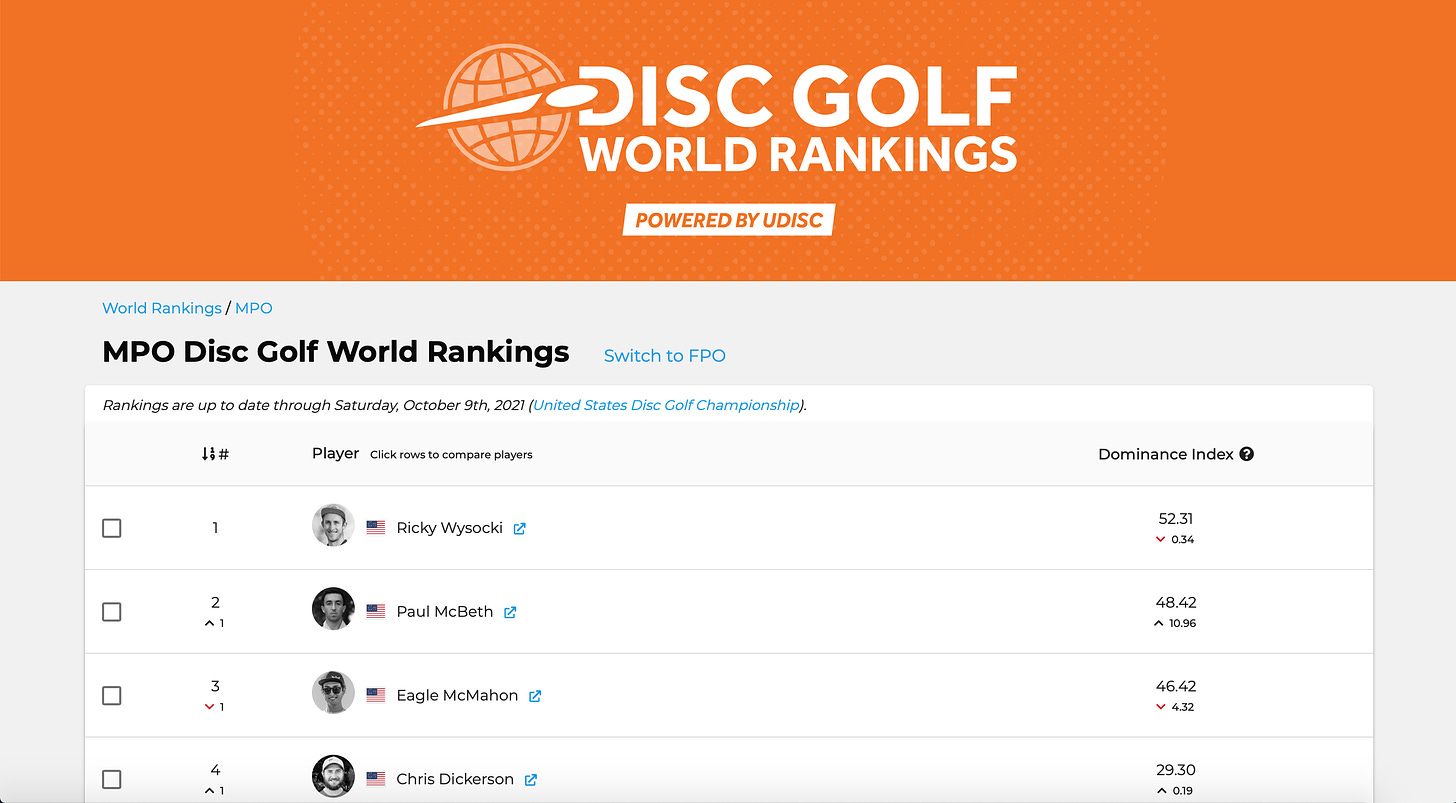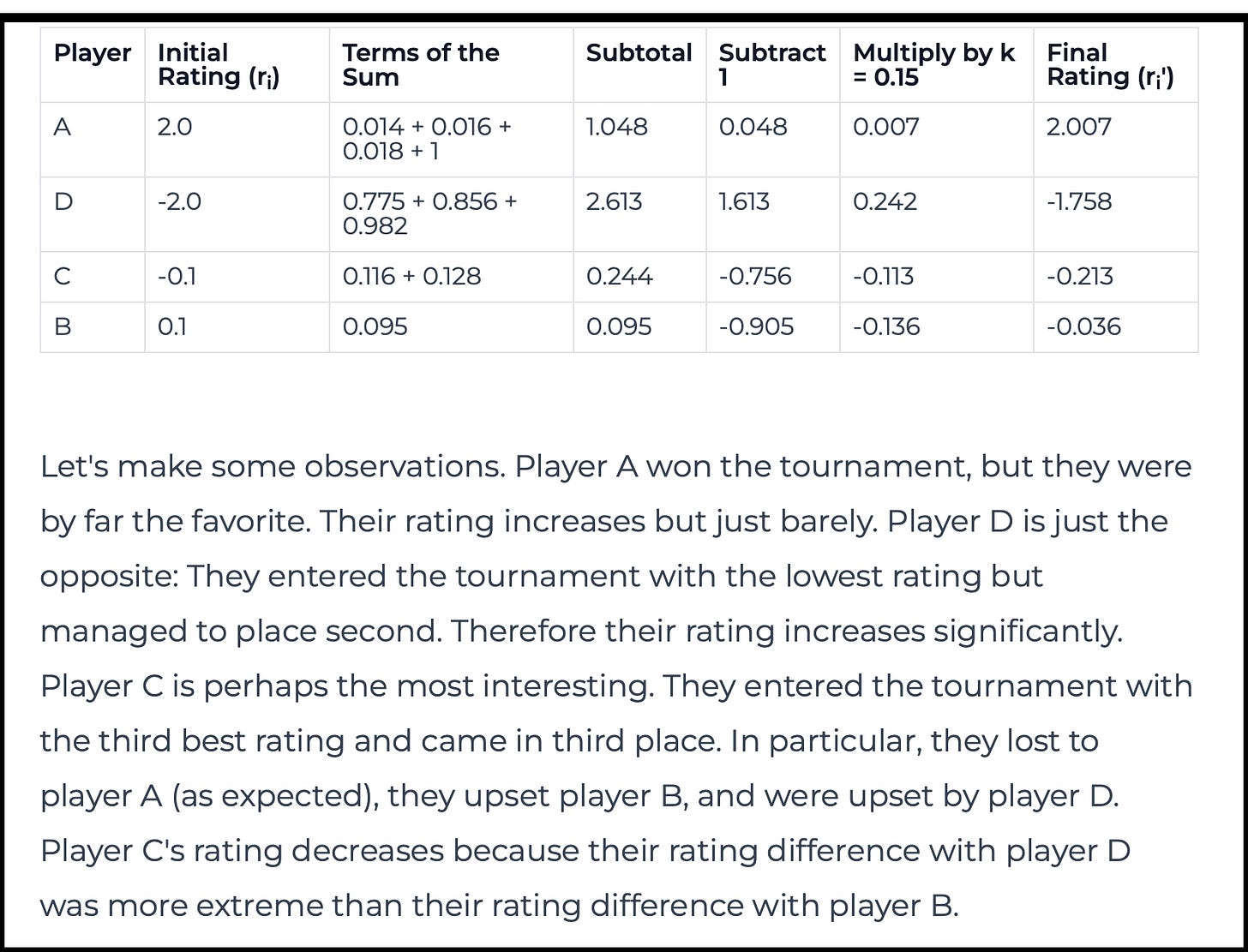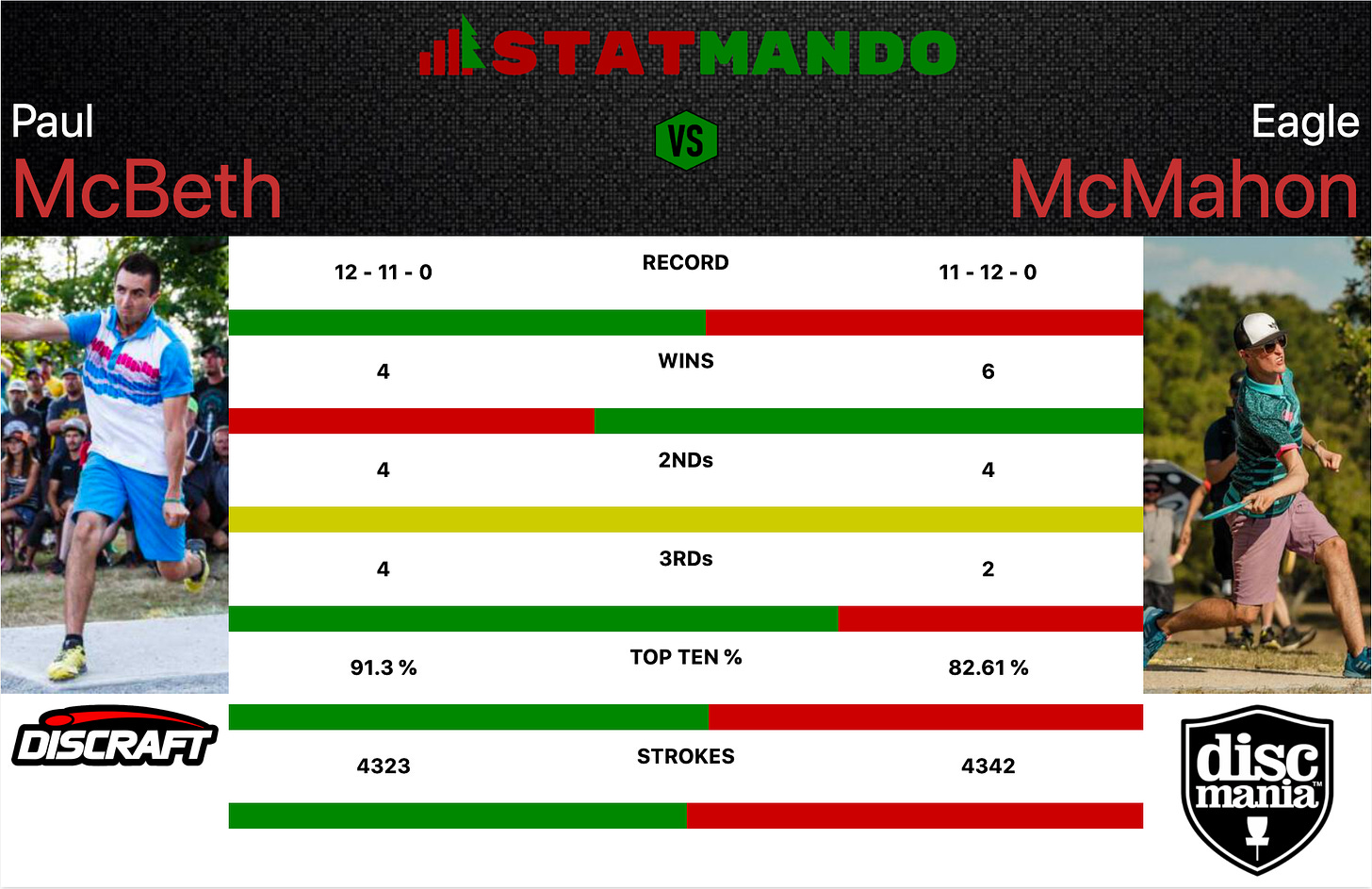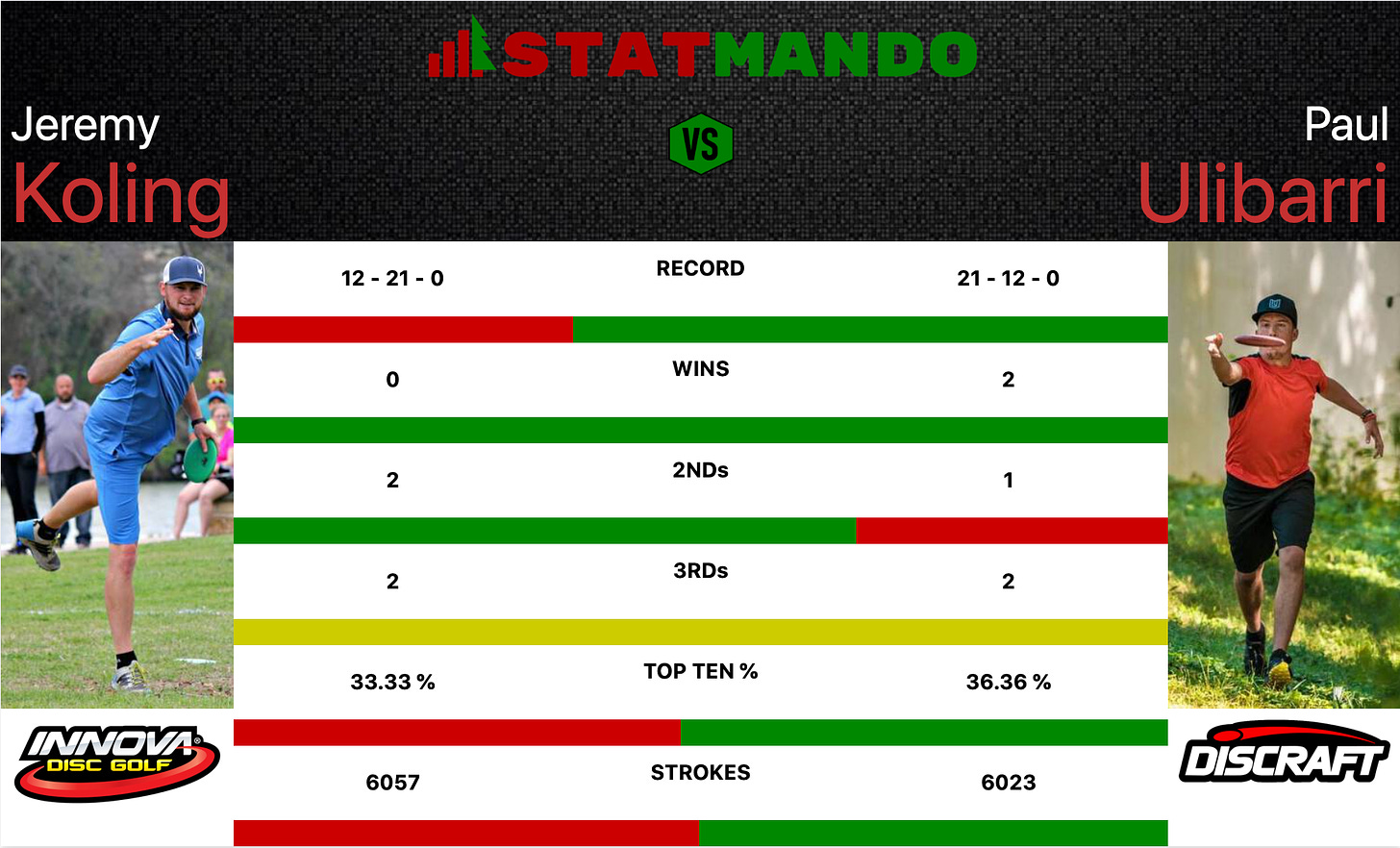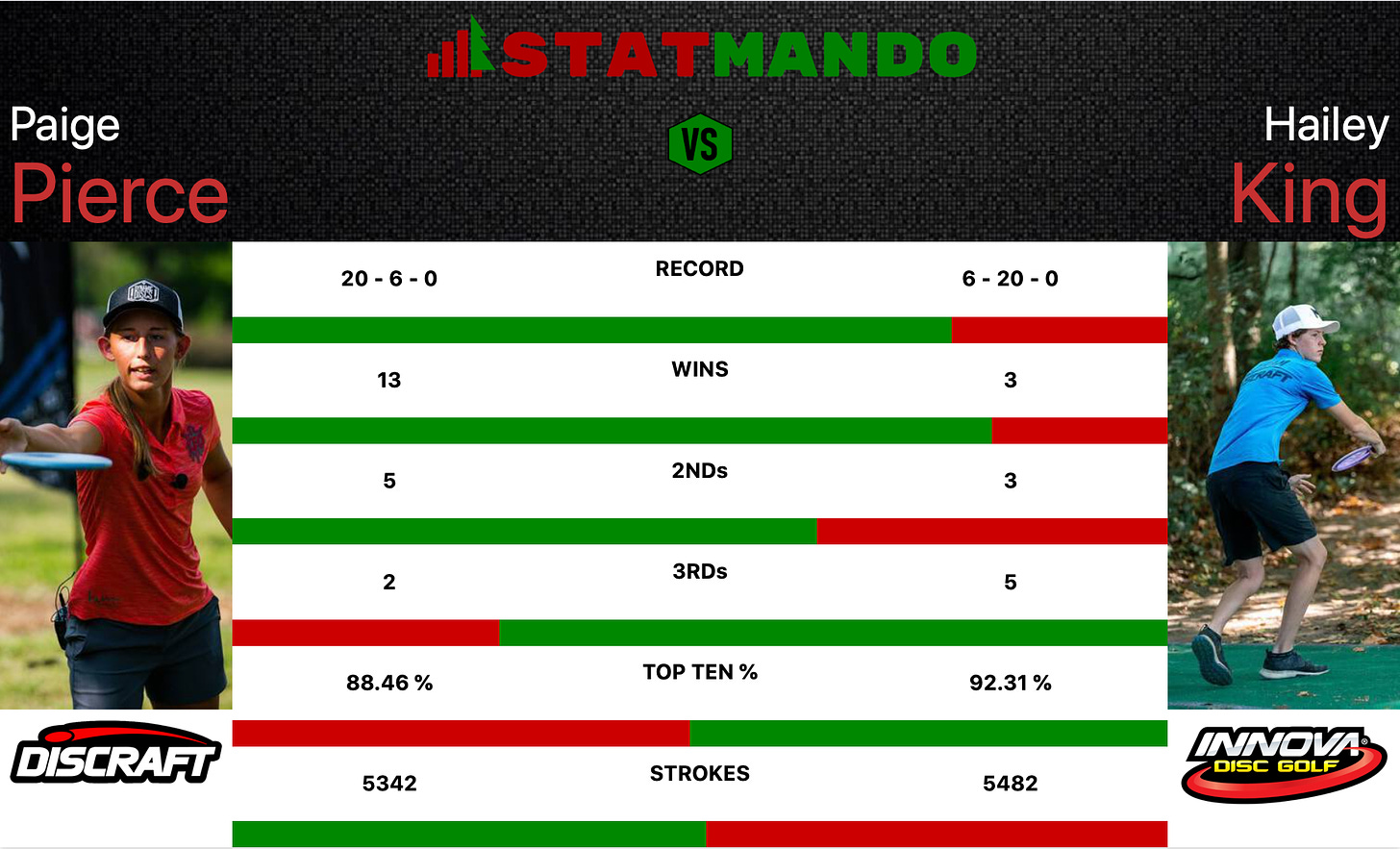Ranking players with the UDisc dominance index
A breakdown of the UDisc world rankings and how they compare to real head-to-head results
Since its inception in 1998 disc golfers have become quite familiar with the PDGA player rating system as a means to evaluate and rank players. Many players take at least some issue with this system, most commonly arguing that player ratings are a reflection of what the player has done in the past rather than what they are capable of doing now. Like many disc golf fans I was excited back in June when UDisc announced their own world rankings based on a new formula they had developed called the dominance index. The goal of the dominance index is to easily be able to compare two players and deliver a statistical probability of how often each player will defeat the other in a head-to-head matchup. If you’re only familiar with the PDGA ratings then several players are likely ranked higher or lower than you may expect on UDisc. Right off the bat you may notice that Paul McBeth (1050) is ranked ahead of Eagle McMahon (1053). Or that Kona Panis (949) is ranked well ahead of Ohn Scoggins (964). The website allows you to select two or more players and using the dominance index will provide the likelihood of each player winning a head-to-head matchup. A quick check of the final cards from the Disc Golf Pro Tour Championship shows that UDisc predicted only a 0.74% chance of Nathan Queen and Missy Gannon both taking home the grand prize that day.
Thanks to our friends over at Statmando and the handy head-to-head feature on their website we can easily look at some of these UDisc rankings and see how they hold up to actual tournament results.
First off let’s dive into the world rankings and dominance index a bit to examine how the formula works. This will be a fairly basic explanation so if you’re interested in a much deeper dive into the math then check out this article by UDisc data scientist Doeke Buursma on how their world rankings are calculated. The rankings system is based off of the Elo rating system, which is used to rank chess players. Only PDGA majors, elite series, silver series and European tour events factor into the formula, as well as the European Championships and Throw Pink Women’s Disc Golf Championship. The points have a “half-life” of one year and are thrown out entirely after two years. This means that an event from one year ago only counts 50% as much as it did after the event occured, and only events from the past two years are factored in at all. A player’s dominance index goes up or down in accordance with how the entire field finished based on their expected finishes. Take a look at the table and explanation below, you won’t have the full context for the math involved without reading the article linked above, but it does a good job explaining how ratings may change based on a player’s initial rating.
So now let's see how UDisc predicts the probability of certain players winning against each other, and then compare that to their actual records against one another using statmando.com. Starting with Paul McBeth and Eagle McMahon, although Eagle’s PDGA player rating is higher UDisc predicts that McBeth will win 51.1% of his matchups against McMahon. All-time McBeth has finished ahead of McMahon in 68.3% of events. This of course dates all the way back to 2015 and we know that UDisc only factors in the past two years. So looking only at events from that timeframe we see that McBeth has finished ahead of McMahon at 52.2% of events, pretty close to the probability that UDisc predicted.
Moving on to a couple of players who have the same PDGA rating, Jeremy Koling and Paul Ulibarri. Both currently rated 1028, UDisc has Koling ranked five spots ahead of Ulibarri and predicts that Big Jerm would win 52.7% of matchups against the other half of BigBarri. Once again thanks to Statmando we can see that all-time Jerm has won just 41.1% of matchups against Uli. Looking at just the past two years however we don't see that margin closing, in fact over the past two seasons Koling has only defeated Ulibarri 36.4% of the time. Because the UDisc formula puts a one year half-life on their points perhaps it’s best to look at just the previous year. In doing that we come a bit closer with Jerm edging out Uli in 44.4% of matchups. So how is Jerm ranked higher on the dominance index? If we make the window even smaller and look at just the final 6 months of the 2021 season then Jerm finally gets in the green defeating Uli in 58.3% of matchups.
It would make sense that while two years of data are factored in, the half-life formula makes it so the dominance index is heavily weighted towards how players have finished fairly recently. In the final comparison let’s look at Paige Pierce and Hailey King, who are ranked 3rd and 4th respectively on the FPO side. UDisc predicts that Paige would win 53% of matchups against Hailey. Since their first tournament together in 2017 Pierce has bested King in 85.4% of matchups and 77% of matchups in just the past two years. Once again that number didn’t change much in the past year dropping slightly to 76.5% and even going back up to 77% in the final six months of the 2021 season. Looking only at the final two months of the 2021 season we finally see the swing in Hailey’s favor, defeating Paige in three out of five events including wins at GMC and Music City. History does not say that these two competitors are even close to 50/50, but recency bias certainly does.
If the argument against PDGA player ratings is that they’re only a reflection of the past year or two, then the UDisc world rankings are mostly a reflection of how players have performed over the past couple of months. The half-life point system seems to weigh recent performances even more so than the PDGA ratings system does. It’s hard to imagine any ranking system that is perfect, but I do think there is a place for UDisc and their dominance index. To me this system can be used similar to how college football updates rankings weekly and is heavily influenced by recent performances and the believed skill level of their competition. What’s more beneficial in this system is that the rankings are not subjective and based on opinion but rather a proven formula. Because of this I believe the UDisc world rankings should be used as an in-season ranking system, as that’s what the dominance index best reflects. With the European FPO field competing on tour the rankings should make some interesting adjustments in the first month after the season has kicked off and I’m interested to continue checking in as the season progresses. But as far as making predictions before a tournament I’m still a bit more inclined to factor in some older tournament results than the dominance index is.
Follow @PDGAStats on Twitter for professional disc golf news and stats




